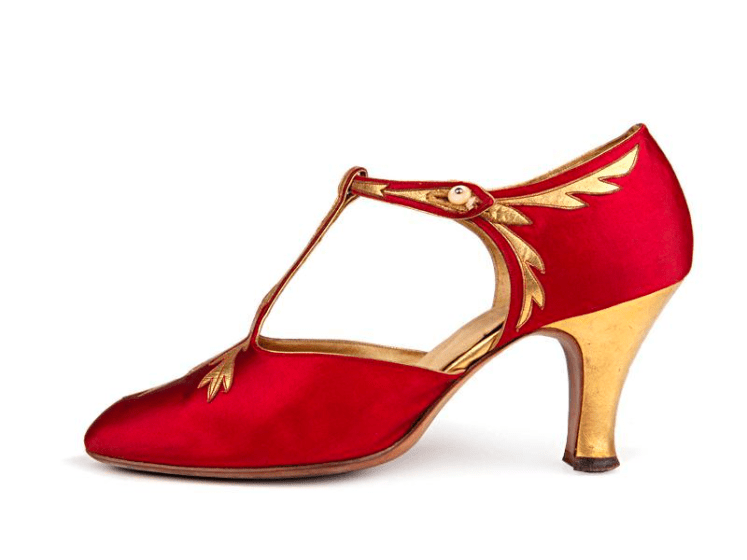Something about the fall and winter months reinvigorates enthusiasm for the Jazz Age, Art Deco, and all things 1920s and flappers! Working on the designs for the All Hallows collection also totally fueled the 1920s fire. There is a reason why 1920s fashion is one of the most popular eras of modern fashion history; 1920s fashion trends are some of the most glamorous and fun there are! Of course, this includes shoes.

Shoes boomed in the 1920s. As skirt hems rose and feet were on display more than ever, the demand for chic footwear for all occasions skyrocketed. Daytime ensembles were paired with simpler, pretty pumps, usually in leather, although sporting shoes were often canvas.


Shiny, sparkly shoes were utterly necessary for nighttime ensembles that would be worn in clubs and for dancing. In response, shoe designers produced a plethora of creatively styled and gorgeous pairs.

Oxfords, Mary Janes, and T-straps were the most popular styles in the 1920s, the latter two in particular for 1920s eveningwear. Mary Janes generally have rounded or almond-shaped toes, and a strap across the instep that fastens with a buckle or button (check out our recent post on the history of Mary Janes for more information).

The T-strap (or T-bar if you’re in the UK) is quite similar shape-wise. T-strap shoes feature a strap extending from the toe of the shoe, up the vamp, and bisecting with the strap across the instep to create a T-shape. T-straps like the new Lilith Shoes are SO quintessentially 1920s! In addition to shoes with classic T-straps, the first half of the 1920s saw all manner of ornate T-straps made with cutout aprons across the instep, strappy detailing, and complex patterns.


Evening wear shoes usually had Cuban or Spanish heels, at heights tall enough for some oomph but not so sky-high that dancing would be impeded – ideally 2-3 inches/5-8 cm. Textiles like satin were incorporated into shoes’ uppers, and creativity with color, texture, and patterns really came into play. Metallic silvers and golds were extremely popular, both for the leather bits and any textile bits. In the first half of the 1920’s, brocade textiles were quite popular for evening shoes.


Velvet was used from time to time, but satin was especially popular.


As complex strap cutouts waned in popularity and simpler T-straps rose, it became trendy to use contrasting materials inlaid and appliqúed into whimsical patterns.


Trimmings like beading, grosgrain ribbon, rhinestone clips and buckles, and embroidery spruced up the fanciest of fancies in 1920s footwear. Larger shoe ornaments with Art Deco motifs were popular in the later half of the 1920s, when one could buy these ornaments to mix and match with a variety of evening shoes.

Our latest 1920s darling, Lilith, is perchance the most beautiful vintage reproduction shoe we have ever made. Based on an extant celadon and silver pair from the Shoe Icons collection, Lilith is a t-strap d’orsay featuring inlaid satin and leather, charming cutout details, and a rhinestone buckle. She has a bit of everything that made 1920s evening shoes spectacular.
Seriously, this shoe is really special. We even made a *super-extra* special Limited Edition Wildcard version of Lilith in copper and teal. It’s gorgeous!
Lilith Shoes are available in SIX stunning colorways as part of our All Hallows pre-order! Each pair is $20/€20 off through November 11, 2022. The only thing left to decide is… which colors will you get?
All Hallows
Pre-Order October 28 – November 11, 2022
$20/€20 discount per pair
Women’s USA sizes 5 – 12












2 Comments
Elara
November 2, 2022 at 5:35 PMPlease please please make those 1920s starburst Mary Janes someday!! 😍
Jackie Joy
November 7, 2022 at 8:15 AMI love the Lilith. I only wish I wasn’t eighty and only wear Birkenstocks.